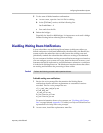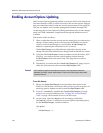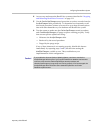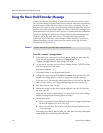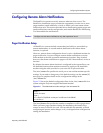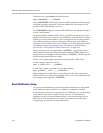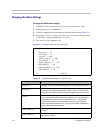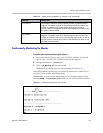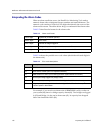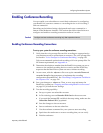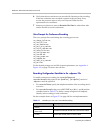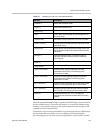
Configuring the ReadiVoice System
Proprietary & Confidential 133
The
/rahome/bin/email
file specifies the addresses to which to send email
alerts. When you enter email addresses during the installation, the install
script creates an entry in this file for each. You can edit this file manually to
make changes or if you skipped alarm configuration during the installation.
Each line in the file contains a single email address. For instance, it might
contain the following:
root
cnow
george_w@confservices.com
Testing Remote Alarm Notification
To verify that remote alarm notification is working properly and to adjust the
timing in the pager notifications, you need to generate alarm notifications for
testing. You can do so at the command prompt. To create a test alarm, sending
the alarm code
123456789
, enter this command:
/rahome/bin/alarm.sh 123456789
The pagers you entered should receive the page. Depending on the paging
service, this may take a few minutes.
To test the entire process, including alarm code generation and both email and
pager notification, create loss of capacity events. The simplest approach is to
remove spans manually until you reach the capacity threshold for the bridge
or system. For instance, with the default threshold setting, you can generate a
bridge capacity alarm for a 480-port T1 bridge by removing four or more
spans.
If you want to generate a system capacity alarm for a multiple-bridge system,
you may want to temporarily increase the threshold setting first.
The default settings for alarm monitoring work well for most situations, but
you can modify them if necessary. The sections that follow describe how to
change the alarm settings, run the ReadiVoice Monitoring Tool, and interpret
the alarm codes.
The ReadiVoice Monitoring Tool must run continuously in order to provide
alarm monitoring and remote alarm notification.



